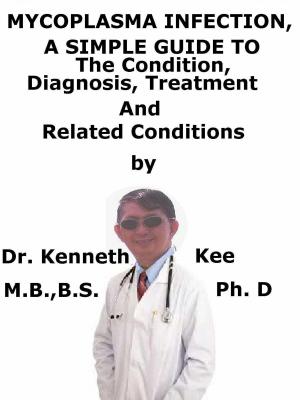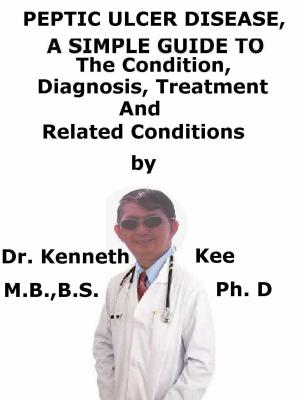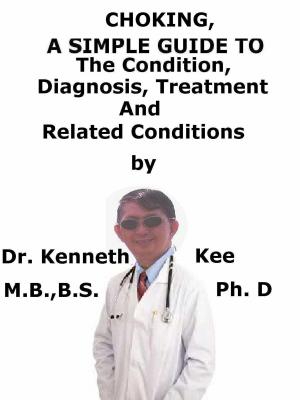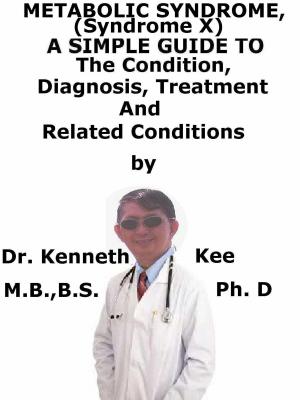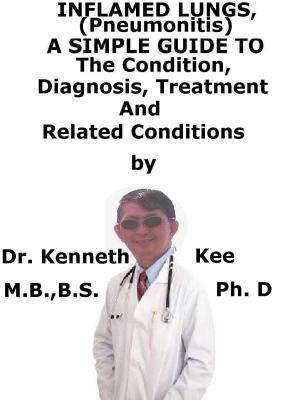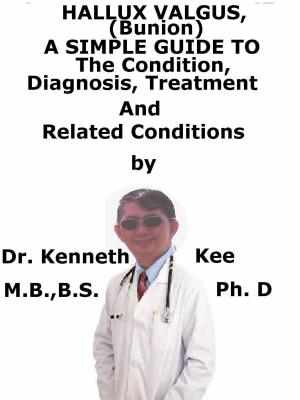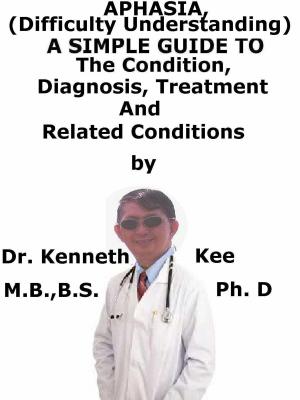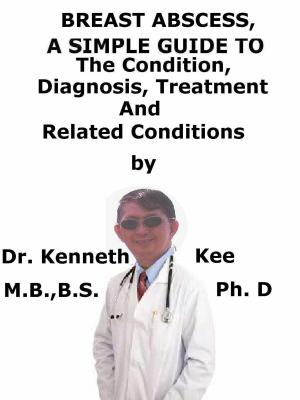A Simple Guide to Back Pain and Other Spine Disorders
Nonfiction, Health & Well Being, Health, Ailments & Diseases, Musculoskeletal, Pain Management| Author: | Kenneth Kee | ISBN: | 9781301025350 |
| Publisher: | Kenneth Kee | Publication: | November 14, 2012 |
| Imprint: | Smashwords Edition | Language: | English |
| Author: | Kenneth Kee |
| ISBN: | 9781301025350 |
| Publisher: | Kenneth Kee |
| Publication: | November 14, 2012 |
| Imprint: | Smashwords Edition |
| Language: | English |
Backache is one of the most common complaints by patients seen in a family doctor's clinic.
The complaint may be:
-
Constant aching, pain or stiffness that occurs anywhere along your spine, from the base of the neck to the hips.
-
Sharp pain in the neck, upper back, or lower back, especially after lifting heavy objects or other strenuous activity.
-
Chronic ache in the middle or lower back, especially after sitting or standing for long period of time.
More men suffer from it than women.
Backache is most common among people in their middle age.
Backache also occurs among young people aged 16 - 24 years.
What are the causes of Backache?
The doctor usually asked for a history of:
-
back strain from the lifting of a heavy object,
-
from a fall,
-
Prolonged sitting with poor posture can also lead to chronic backache such as slouching in a couch when watching TV.
If the bad posture is prolonged, backache may occur.
-
wearing high heeled shoes also put a lot of strain on the back muscles
-
associated pain in legs or weakness and tingling in the legs or back.
-
pain increases when you cough or bend forward at the waist.
-
Back pain radiates into the legs, sciatica.
This could be a sign of a herniated disk.
- dull pain in one area of your spine when trying to lie down or getting out of bed, especially if you are over 50 years of age.
You may be suffering from osteoarthritis
- pain is felt in both thighs when walking.
This can be a symptom of spinal stenosis (the narrowing of the lower spinal canal).
- persistent backache may also be an indication of an undetected cancer of the colon, ovary, bladder or prostate.
11.gynaecological problems (such as ovarian tumors, fibroids) and pregnancy.
How is Backache diagnosed?
Diagnosis:
-
Full medical examination especially of movement of the back , any deformity of the spine, abdominal swelling, straight leg raising test
-
X-ray of the Spine: to exclude fracture, osteoarthritis, dislocation,
-
X-ray of abdomen to exclude any tumors in the abdomen pressing against the spine
-
MRI of spine for slipped disc, tumors, fracture
-
Bone density test to exclude osteoporosis
-
Blood tests for calcium, protein, kidney function, cancer markers, RA factor
-
Urine and stool tests for blood,
What is the treatment of Backache?
Symptomatic:
-
Painkillers and muscle relaxants
-
Ice packs or heat treatment
-
Physiotherapy to strengthen muscles
-
Good posture and firm mattress
-
Avoid aggravating factors like high heels, overstretching muscles, excessive strenuous activities
Curative:
The cause must be found and treated.
Examples are fractures due to injury.
Causes like cancer and aged related illness (osteoarthritis) may not be able to be cured but may improved with treatment.
How is Backache prevented?
Prevention
- Maintain the correct posture at all times.
When standing or sitting, ensure that your back is kept straight instead of a slouched position.
-
support your back and use a cushion when necessary.
-
Correct furniture can also help to prevent the occurrence of backache.
Use chairs of a proper height in relation to the table or desk. -
Sleep on a firm mattress
-
Do not wear high heels
-
Keep your back straight when carrying heavy item.
Keep the item close to the body.
- Do not bend the back to carry heavy objects.
Bend the knees keep the back straight
Exercise is another good way to prevent backache by strengthening the back muscles.
However, if you have had back injuries before such as a slipped disc, do be cautious when you exercise.
TABLE OF CONTENT
Chapter 1 Backache
Chapter 2 Osteoarthritis
Chapter 3 Ankylosing Spondylosis
Chapter 4 Prolapsed Disc
Chapter 5 Spinal Stenosis
Chapter 6 Coccyx Dislocation
Backache is one of the most common complaints by patients seen in a family doctor's clinic.
The complaint may be:
-
Constant aching, pain or stiffness that occurs anywhere along your spine, from the base of the neck to the hips.
-
Sharp pain in the neck, upper back, or lower back, especially after lifting heavy objects or other strenuous activity.
-
Chronic ache in the middle or lower back, especially after sitting or standing for long period of time.
More men suffer from it than women.
Backache is most common among people in their middle age.
Backache also occurs among young people aged 16 - 24 years.
What are the causes of Backache?
The doctor usually asked for a history of:
-
back strain from the lifting of a heavy object,
-
from a fall,
-
Prolonged sitting with poor posture can also lead to chronic backache such as slouching in a couch when watching TV.
If the bad posture is prolonged, backache may occur.
-
wearing high heeled shoes also put a lot of strain on the back muscles
-
associated pain in legs or weakness and tingling in the legs or back.
-
pain increases when you cough or bend forward at the waist.
-
Back pain radiates into the legs, sciatica.
This could be a sign of a herniated disk.
- dull pain in one area of your spine when trying to lie down or getting out of bed, especially if you are over 50 years of age.
You may be suffering from osteoarthritis
- pain is felt in both thighs when walking.
This can be a symptom of spinal stenosis (the narrowing of the lower spinal canal).
- persistent backache may also be an indication of an undetected cancer of the colon, ovary, bladder or prostate.
11.gynaecological problems (such as ovarian tumors, fibroids) and pregnancy.
How is Backache diagnosed?
Diagnosis:
-
Full medical examination especially of movement of the back , any deformity of the spine, abdominal swelling, straight leg raising test
-
X-ray of the Spine: to exclude fracture, osteoarthritis, dislocation,
-
X-ray of abdomen to exclude any tumors in the abdomen pressing against the spine
-
MRI of spine for slipped disc, tumors, fracture
-
Bone density test to exclude osteoporosis
-
Blood tests for calcium, protein, kidney function, cancer markers, RA factor
-
Urine and stool tests for blood,
What is the treatment of Backache?
Symptomatic:
-
Painkillers and muscle relaxants
-
Ice packs or heat treatment
-
Physiotherapy to strengthen muscles
-
Good posture and firm mattress
-
Avoid aggravating factors like high heels, overstretching muscles, excessive strenuous activities
Curative:
The cause must be found and treated.
Examples are fractures due to injury.
Causes like cancer and aged related illness (osteoarthritis) may not be able to be cured but may improved with treatment.
How is Backache prevented?
Prevention
- Maintain the correct posture at all times.
When standing or sitting, ensure that your back is kept straight instead of a slouched position.
-
support your back and use a cushion when necessary.
-
Correct furniture can also help to prevent the occurrence of backache.
Use chairs of a proper height in relation to the table or desk. -
Sleep on a firm mattress
-
Do not wear high heels
-
Keep your back straight when carrying heavy item.
Keep the item close to the body.
- Do not bend the back to carry heavy objects.
Bend the knees keep the back straight
Exercise is another good way to prevent backache by strengthening the back muscles.
However, if you have had back injuries before such as a slipped disc, do be cautious when you exercise.
TABLE OF CONTENT
Chapter 1 Backache
Chapter 2 Osteoarthritis
Chapter 3 Ankylosing Spondylosis
Chapter 4 Prolapsed Disc
Chapter 5 Spinal Stenosis
Chapter 6 Coccyx Dislocation



